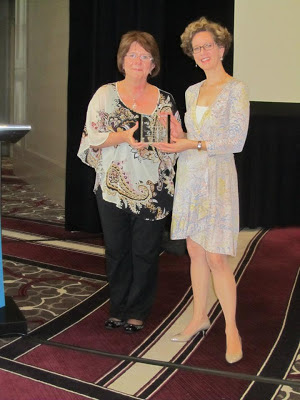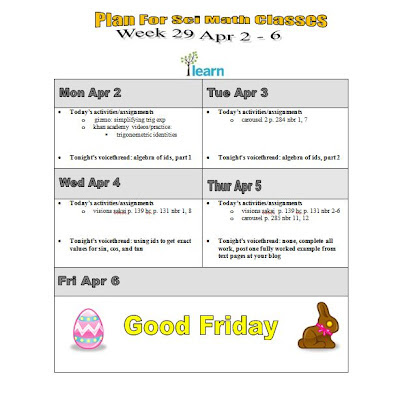This post is kind of my timeline since I started flipping. I looked back at all my posts since that first day, and it was quite the eye-opener, even though I wrote them all and I was there for the whole saga. I think it's crucial for everyone, flippers and critics alike, to let time enter into the discussion. You have to look at it all on a timeline to appreciate it. Toss it all onto a time graph, as individuals, as schools, even the whole movement. For example, I see my professional growth like this:
What can I say, I'm a math teacher, I'm into graphs.
If we looked at the movement as a whole this way, we'd see that the name is starting to not make as much sense, for example, "flip" is starting to be replaced by "Flip 101", since it's really just a starting point, for those of us who are actually doing it. New labels are emerging that reflect the collaborative and higher-order-thinking natures of the movement, like coflip and metaflip. But the thing is, real change is happening, and it started with teachers.
.....what would YOU say? We all need time, time to think, regroup, absorb, debate, compare......to learn. And that's what happens after that first venture into the land of flip, you become a learner right along with your kids.
So here are my stages so far, just under two years in. Whatever speed you move at, and whatever order you do things, I hope you recognize some of these, and please feel free to add.
1. Awakening and Courage: You hear about flipping the class and can't get it out of your head, but it takes almost a year before you have the courage to try it. You make your first recorded lesson and assign it to your students to watch.
2. Let-down: Not all of them watched it. You are shocked. You mean there are kids who don't do homework?!? You assign the same text book questions that you have always assigned. Few requests for help, and those from the same kids who always ask for help. Those who didn't watch either keep a low profile and struggle with the work, or watch during class, if there's a device handy of course.
3. Persistence: Repeat until you can't stand the quiet and the loneliness. You acutely feel the need to interact with your students over anything, preferably the content, to discuss, to hear their thoughts, to straighten out all the things that surely need straightening out.
4. Stirring it up: You start a class by asking if there are any questions from the previous night's lesson. There are a few. You think - this is not so different from traditional, it's the same few kids watching the video and asking questions. What's changed? Why am I doing this again?
5. Connecting: A student asks for help. And it's a good question. It's the kind that you wish every student would ask. It's not just Mrs. how do I do this, it's Why is it this way and not that way. You help them out. You really help them out. You see exactly where they need help, because you're having a conversation with them about it. You realize that even though you only helped one kid, it's such a powerful exchange that you are addicted to it. You wonder why this is the first time it's happened, even though you've been teaching for over 20 years.
6. Widening the radar: You start to initiate conversations with other kids, rather than wait for them to do it, because you know that most of them would rather not even be here, let alone talk to you about how they can't do the things you're asking them to do, which by the way, they don't want to do those either. You find you're getting to know these kids for the first time since they've been in your class. You feel a bit ashamed when you think of all those who've slipped under your radar over the years.
7. Speeding up/down: The stronger students begin to move ahead and ask for the next lesson before it's ready. You are like a deer in the headlights. Ummmm....do you have any other homework? you ask sheepishly. That night you spend a boatload of time queuing up the next few lessons and assigned work. You make it all available to them, from a website that you've only now understood what it's for, a content management system, or CMS. You start saying things like CMS. You try to sound casual, like, oh yeah, I just put it on the CMS, whatever.
8. Keeping track: Since they're not all getting things done at the same speed, you realize you need to keep track more than you ever needed to before, but you can't keep up with the data. You start to use another website to do that, a wonderful one called google drive, and it is wonderful, for it is google drive. You start to say things like "I uploaded it to google drive" or "Did you update the checklist on google drive?" for you are now making these things called google forms. Your friends start to call you a technological genius. And stop listening to you because they think you must be some kind of technological genius, and anyway, they "don't have time" for all that tech stuff. You start to feel all alone.
9. Deepening thoughts: You feel like your class is becoming a ragtag band of math wanderers, then suddenly you remember a class activity that you were all fired up about 3 years ago from a workshop but that you never fit into your class. You spend your evening designing it down to the last detail. Then you worry that it will only take 5 minutes of class time, so you design 2 more activities just in case.
10. More aha-ing: The first activity takes the whole period, because it was a good one, a REALLY good one based on research by Malcolm Swan, that got all of them talking about things you wanted them to notice....and things you didn't even think of, but are really awesome that they're talking about. With you. And each other. So now, during your class, there are conversations going on. About all kinds of stuff, including math.
I know, I know, I said ten...oh well:
11. Community: You join twitter and go through the ten stages of twitter. Then you join The flipped Network and start meeting other teachers. You stop feeling all alone.
12. Awakening of creativity: Everytime you take a shower 2 dozen more ideas come to you. You forget most of them by the time your hair dries. The one you remember you spend the rest of the evening putting together. You resolve to either stop taking showers or write these ideas on the wall with a grease pencil. (Thanks Kate Nowak.)
13. Reality: Your family alerts you to the complete lack of clean underwear anywhere in the house, and to the strange cryptic messages on the bathroom wall.
Bonus steps:
You re-watch your first video.
You begin searching for a large rock to crawl under because it is just so awful. Just. So. Awful.
And now the next stages, which will include making my "lessons" shorter and less and less necessary, another thing I can't get out of my head since hearing Graham Johnson speak at the Global Math Department webinar. Thanks, Graham. And thanks facebook!






















